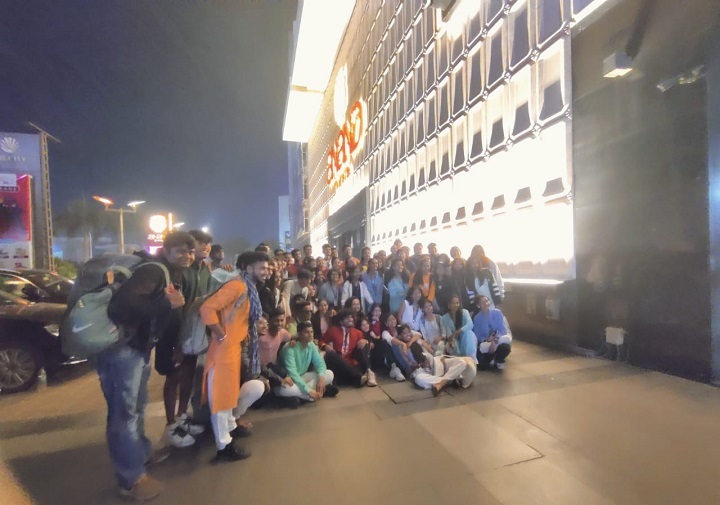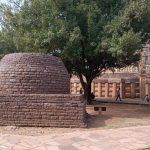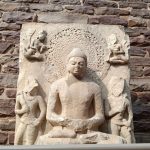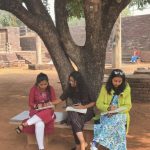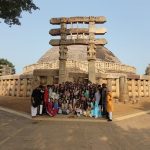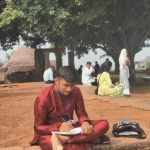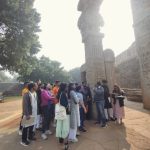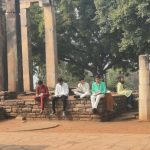| Venue | Bhopal |
| Session | 2022 - 23 |
| Year | 1st Yr B.Arch. |
| Date | 19th to 24th January, 2023 |
| Semester | I |
| No. of Students | 69 |
| Faculty | Subject coordinator : Prof. Ashwini Bhosale Patil |
| Faculty team | Prof. Nitya Prathap Prof. Sayalee Kulkarni Prof. Sharvari Deshmukh |
The aim of the study tour was to develop the analytical skills and create an interactive learning environment for the students of first year.
Apart from building academic capability, the study tour also aimed at building life skills such as team work, communication, problem solving skills and decision making that are only obtained through life experiences.
Objectives
- To bring in an Architectural perspective in the students while observing a place
- To develop the vision and keenness in the students to observe the structures
- To help students understand the Architecture details in the structures.
- To enhance sensitivity towards Indian Architecture by documentation through other artistic means like drafting drawings, photography, sketching and painting.
- Lastly to appreciate the beauty a structure offers through its overall planning and construction.
Introduction
Study tours are a vital part of education in Architecture, as students learn and grasp what they see. Often study tours include places with rich culture, Architecture, and history so that they have a lot to offer for visual learning. The first year students of Architecture went on a study trip to Bhopal, Madhya Pradesh, India as part of their curriculum.
Bhopal, the capital city of Madhya Pradesh is much more than a gas leak of 1984. It is known for its lakes and also is home to many Architectural marvels. Though Bhopal is a city with wide roads and green spaces, a flavor of urbanity and modernism stands stiff against its planar terrain to complement the traditional architecture.
The Nawabs of Bhopal built several structures including the Taj-ul-Masjid and Taj Mahal Palace in Indo Islamic and European styles. Bharat Bhavan is the main cultural Centre of the city and hosts many theatre and film festivals every year. The Bharat Bhavan as well as the MP Legislative assembly were designed by Charles Correa. Indira Gandhi Rashtriya Manav Sangrahalay is an anthropology museum located in Bhopal, to present an integrated story of the evolution of man and culture with special reference to India.
The itinerary of the study tour was designed to appreciate the structures and their makers in Bhopal.
Duration: 19th January, 2023 to 24th January, 2023
No. of Students: 69
No. of Faculties: 04
Places of Visit:
- Indira Gandhi Rashtriya Manav Sangrahalay.
- Bharat Bhavan
- Taj Ul Masjid
- Tribal Museum
- Sanchi Stupa
- Bhimbetka
Day 1 (19th January, 2023) & Day 2 (20th January, 2023) – Train Journey from C.S.T. to Bhopal.
Departure for Bhopal by Punjab Mail (12137). at 19.35 hrs. Mumbai CSTM. The Journey was overnight train journey. The 16 hrs long journey started with lot of excitement and enthusiasm. The pleasant winter climate of Central India was felt during the travel.
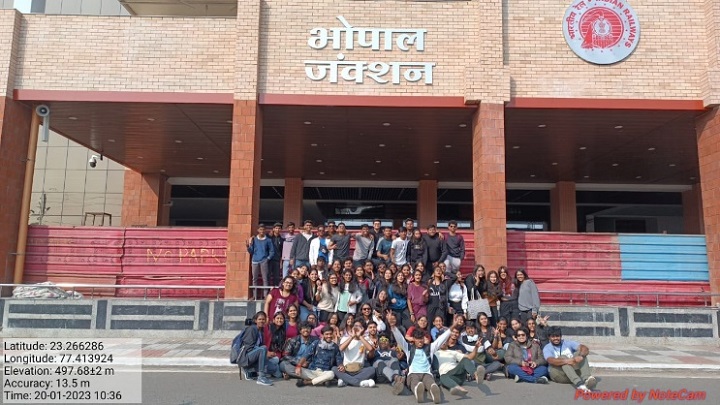
Day 2 (20th January, 2023) – Visit to Manav Sangrahlay, Bhopal
Site Description: (Indira Gandhi Rashtriya Manav Sangrahalay): Any exploration of India’s greatest museum is incomplete without a visit to the Indira Gandhi Rashtriya Manav Sangrahalaya, Bhopal. The museum lies in a prehistoric landscape with evidence of prehistoric human settlement in its premises at Bhopal- the capital city of Madhya Pradesh. Covering an area of about 200 acres of undulating terrain in the Shamla Hills, it is one of the largest and leading anthropological museums in India. Aesthetically curated open-air exhibitions and components with the most enduring indoor exhibitions, it promises to live up to the expectations of museum visitors. This museum depicts the story of mankind in time and space. It offers an opportunity to explore the most subtle but artistic sensibilities of the rich Indian culture and heritage through its appealing exhibitions. It has 8 open-air exhibitions and 12 indoor galleries. Impressive periodical and travelling exhibitions of the museum on various topics are highly receptive and friendly to the visitors. Moreover, museum activities of this museum are designed to make information educative and entertaining. A visitor-friendly environment with an improvised form of interactive displays offers a new taste to museum visits. Education programmes, workshops, seminars, symposia, group discussions. conferences, cultural programmes, regional and cultural festivals, lectures, artists camps, etc. are some regular activities of the museum.
The following open-air exhibitions partially developed and opened for the public: Tribal Habitat. Coastal Village, Desert Village, Himalayan Village, Mythological Trail, Traditional Technology park.
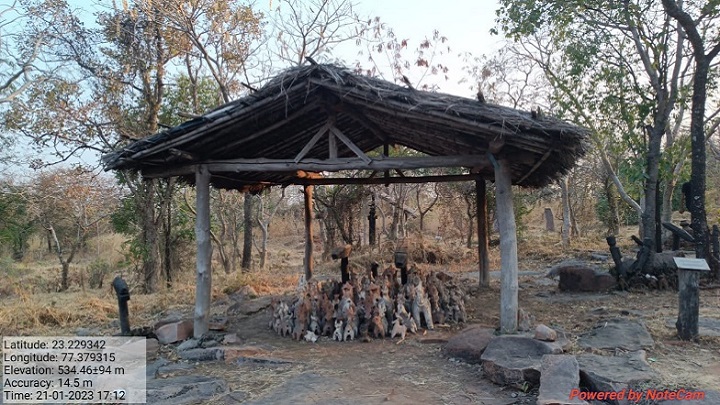
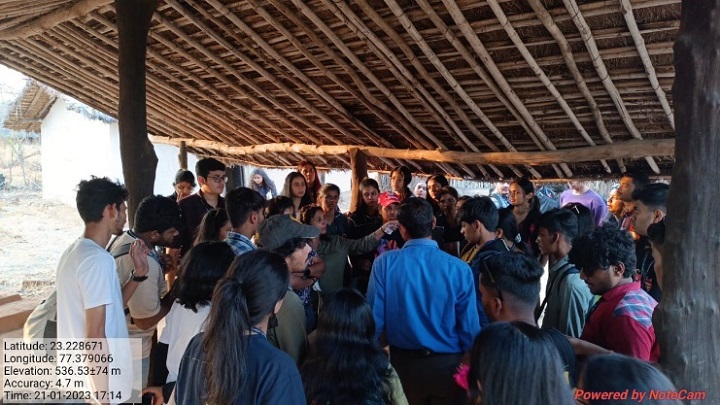
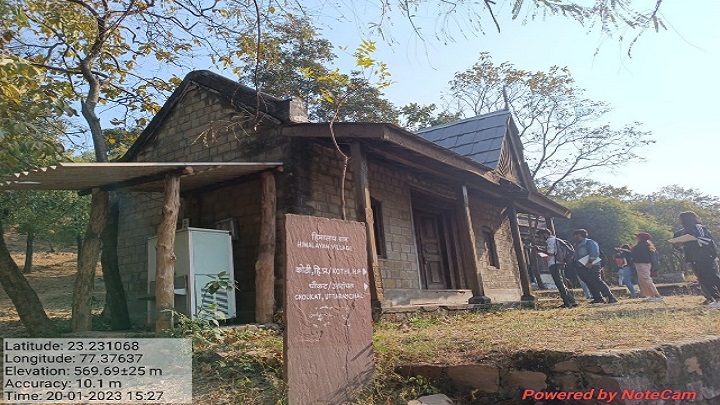
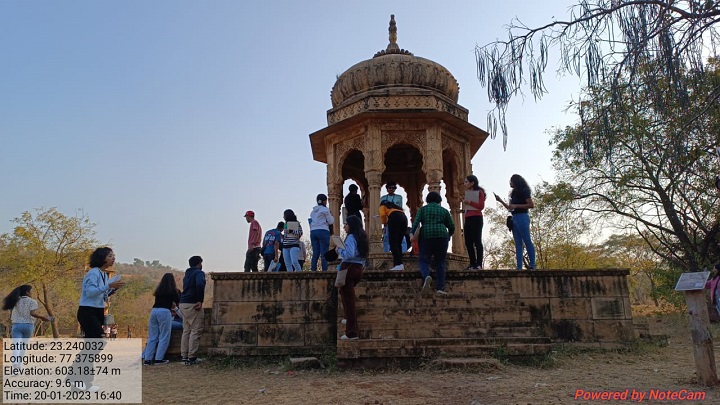
Students were identified into different groups and directed to study and sketch different villages situated at the site.
Day 2 (21st January, 2023) – Architectural Measurements Documentation of Manav Sangrahlay, Bhopal.
For measured drawings of Manav sangrahlay, students were to document historically and architecturally significant buildings in the form of as-built drawings. They were divided into 8 groups (of 8-9 students) who were to study and document 8 villages located in IGRMS. Those are as follows:
- Himalayan Village (2 structures)
- Coastal Village
- Desert Village
- Tribal Habitat (3 structures)
Measured drawings is the term recognized in the industry to describe the drawings prepared from on-site measurements of an existing building or space. It can be for a building to which additions or alterations will be made; or for spaces which are intended for lease and from which drawings the areas for lease purposes will be calculated.
The study aimed to develop an understanding within the students of the principles of building construction and the method of recording it in three documentation methods; measured drawings, written/sketches documentation and photographic documentation.
A Special session was also conducted by Mr. Pandey Sir, Director of IGRMS, who gave introduction and information about the site and its overall expansion. His staff-members also explained in detail about the construction techniques of different structures located in IGRMS
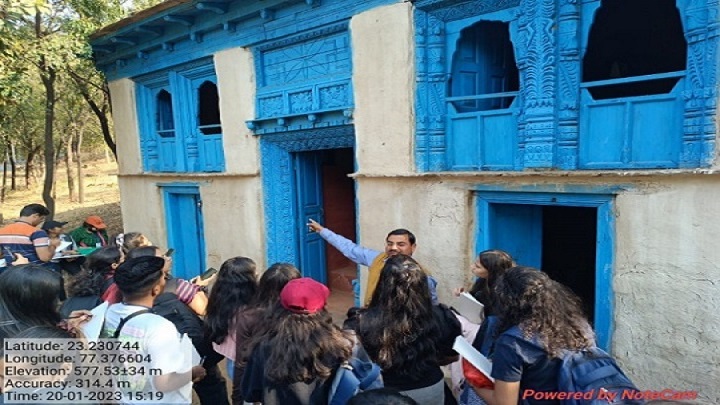
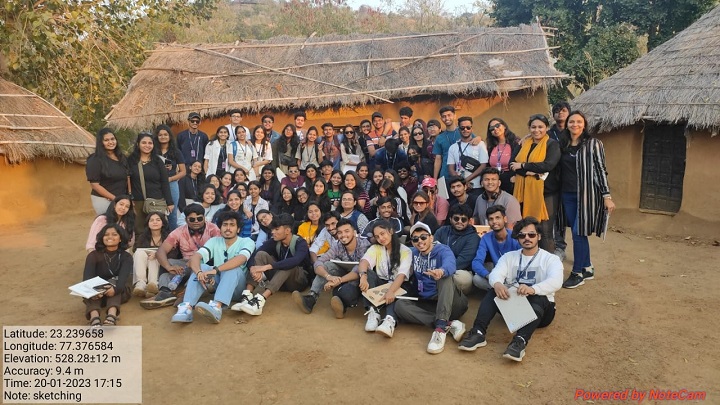
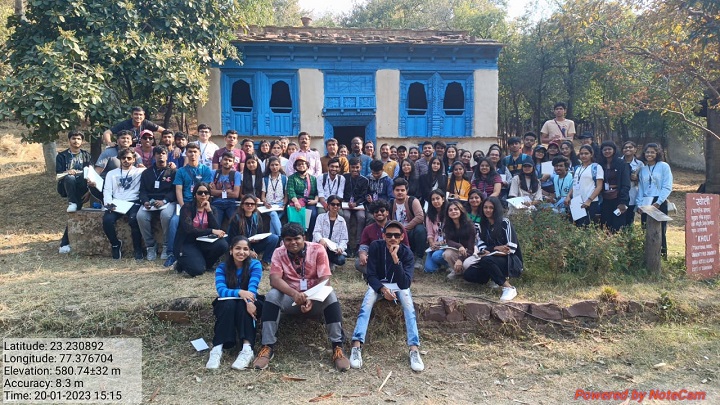
Students were divided in groups and were asked to document the structures. Their main goal was to take proper measurements on site of the structures along-with sketches and photos for the same.
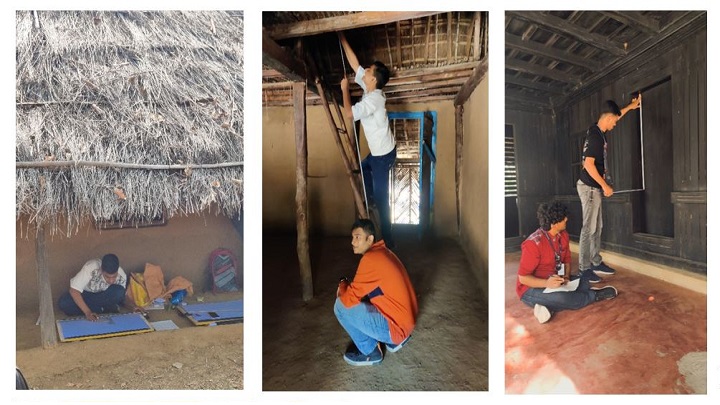
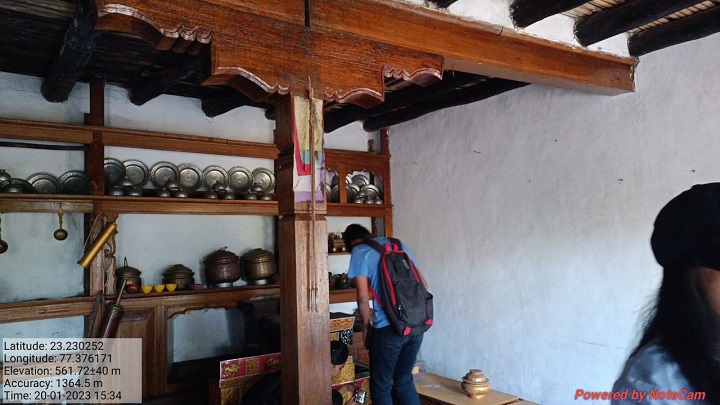
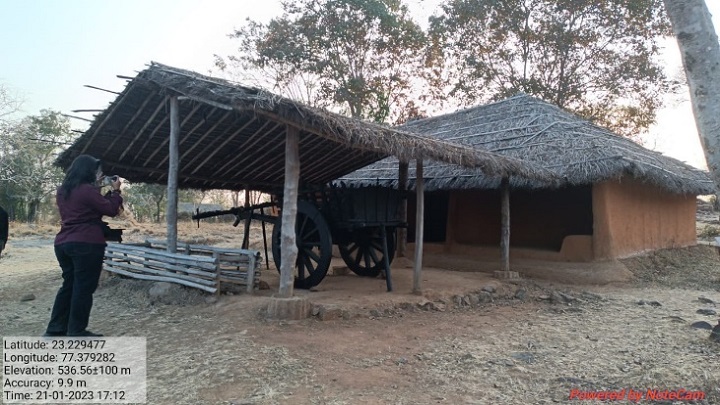
For these two days, towards the end of the day, we had a discussion in the hotel lobby, on each day’s work and marked the groups accordingly.
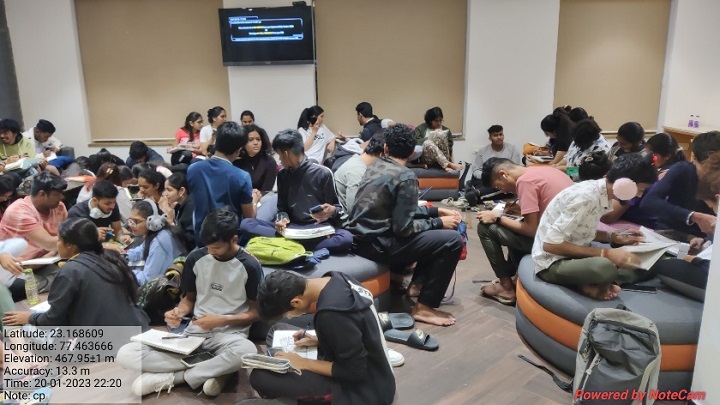
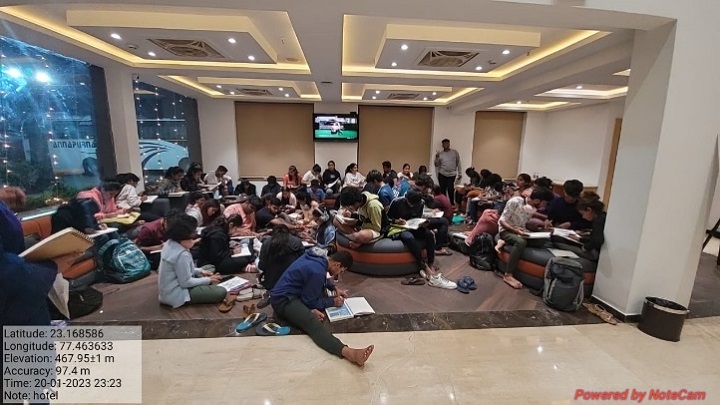
Day 3 (22nd January, 2023) – Visit to Taj-Ul-Masjid, Market visit, Tribal Museum, Bharat Bhavan, Bhopal
Our Day 3 journey started at 9:00 a.m. where we first visited to Taj-Ul-Masjid, The Taj-ul-,lit. ’Crown of Mosques’) is a mosque situated in Bhopal, Madhya Pradesh, India. It is the largest mosque in India and one of the largest mosques in the world. The Taj-ul-Masajid largely takes inspiration from Mughal architecture.The mosque has a pink facade topped by two 18-storey high octagonal minarets with marble domes, an impressive main hallway with attractive pillars, and marble flooring resembling the likes of Jama Masjid in Delhi and the Badshahi Mosque of Lahore.
Students sketched various details at this place. They also did photography of various elements of the mosque
We then left for Bharat Bhavan post lunch at around 2:30 p.m. Bharat Bhavan is an autonomous multi-arts complex and museum in Bhopal, India, established and funded by the Government of Madhya Pradesh. The architect of the Bharat Bhavan is Charles Correa. Opened in 1982, facing the Upper Lake, Bhopal, it houses multiple art galleries, a graphic printing workshop, a ceramics workshop, an open-air amphitheater, a studio theatre, an auditorium, a museum of tribal & folk art and libraries of Indian poetry, classical music & folk music. Students explored the museum and various spaces in and out of it.
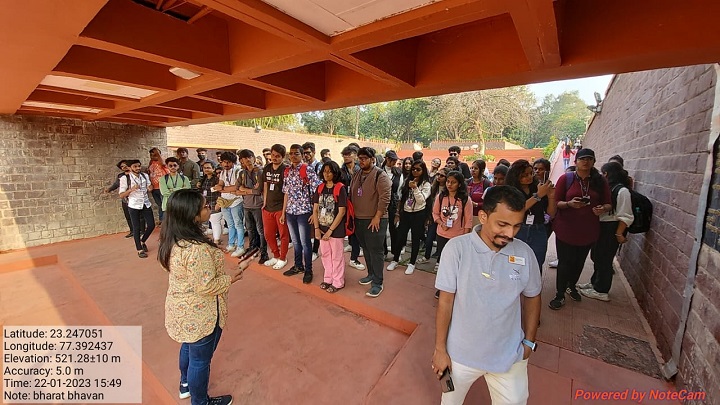
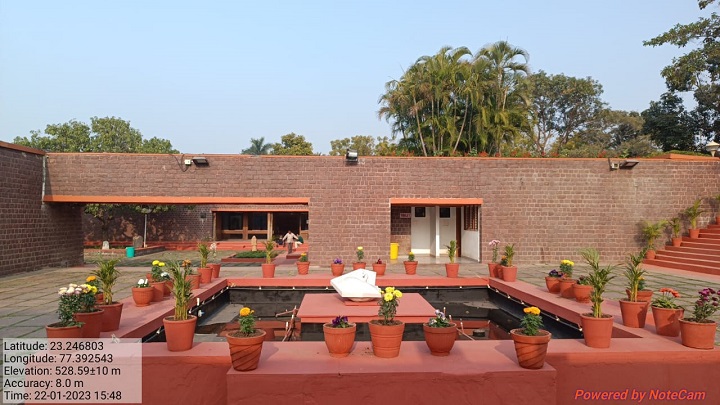
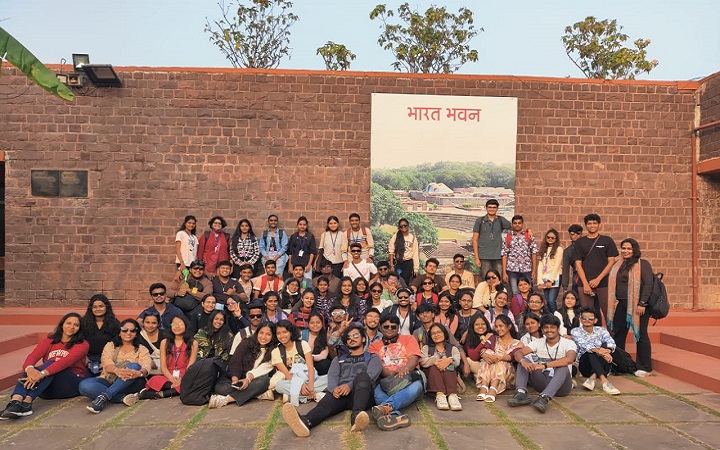
We then visited to the Madhya Pradesh Tribal Museum in Bhopal that took student on an immersive journey through the culture of the local tribes of the state. With large colourful displays, the museum shows the art, traditions, daily life, and customs of a large number of indigenous groups. The Tribal Life Gallery has full-sized models of the tribes’ houses and dwellings, large enough for visitors to go inside. In another gallery, stories of worship and sacrifice are portrayed through impressive art installations. Artefacts from daily life are presented alongside cultural symbols that contain deep meanings passed through the generations.
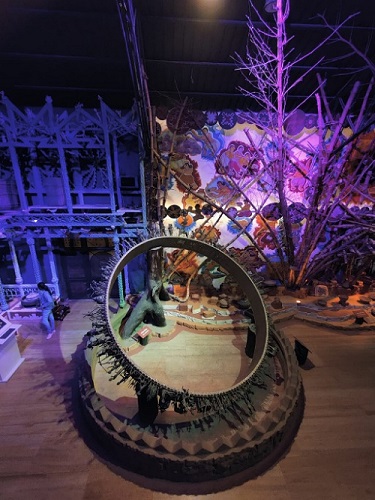
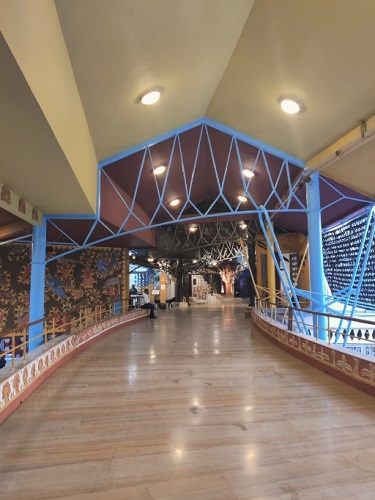
Day 4 (23rd January, 2023) – Visit to Sanchi Stupa, Bhimbetka caves
On Last day of the tour, Students of PiCA visited Sanchi Stupa to expose them to History of Architecture related to Buddha, Ashoka and Jain Buddhism etc. Sanchi Stupa is one of the oldest stone structures in India built during the Mauryan period. The sculptures, monuments and lush gardens of Sanchi Stupa have been designated as the World Heritage site by UNESCO. Hence students of both semesters were given detail knowledge of construction techniques and HISTORY OF ARCHITECTURE
Post lunch, we then proceeded to Bhimbetka caves, which is a Historical place in Amchha Khurd, Madhya Pradesh. The Bhimbetka rock shelters are an archaeological site in central India that spans the Paleolithic and Mesolithic periods, as well as the historic period. It exhibits the earliest traces of human life in India and evidence of Stone Age starting at the site in Acheulian times. Students did sketches and photography here.
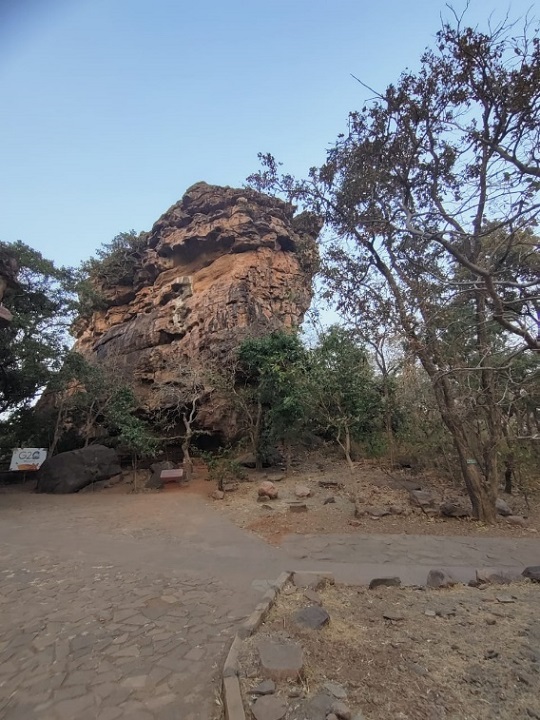
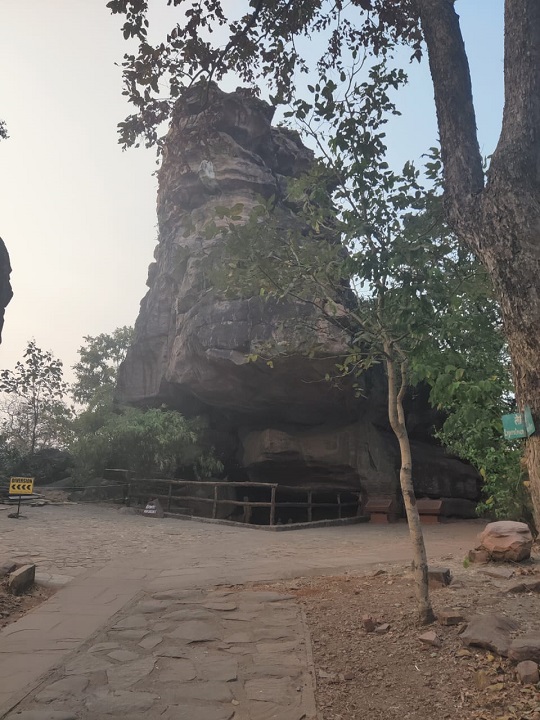
We the left for Rani Kamlapati Station from where late night departure to Bhopal Rly. Station to board the train for home town by 15065 GKP – Panvel Exp at 00:40 hrs Midnight. Overnight train journey. Our Study tour concluded at Panvel Railway station at 4:00 p.m. on 23rd January, 2023 Tuesday.
